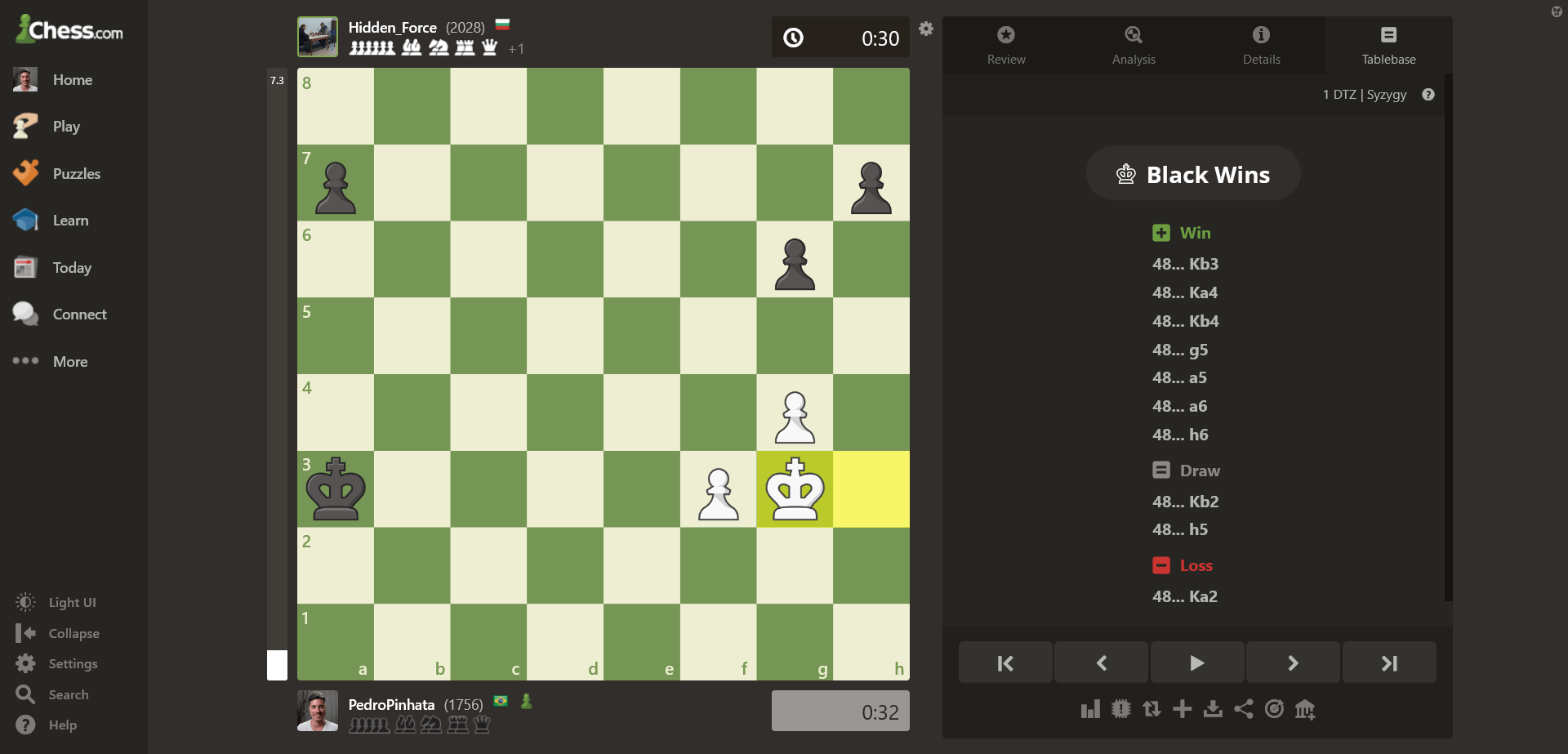

DTZ shown in Syzygy stands for distance-to-zero in this sense. Of course, the tablebase strategy is not necessarily to checkmate directly, but instead to find a capture, pawn move (or indeed mate itself!) to reach a simpler but still winning position which will reset the 50-move clock. But let’s try White’s apparently quickest route to victory, 1.Nd3. Here is the solution as explained by the composer himself:Īpparently, any move by White wins, except for the blundering 1.Na2?, which only draws. But is that really true, or is there just one winning move? White is a knight ahead here and that seems to be a decisive material advantage according to Syzygy, since almost every legal white move is marked as a win. Click this link to the Syzygy tablebases that will open with the correct position.
#Endgame tablebase where to find plus#
In any case, with these considerations in mind (they are significant clues!), plus the actual tablebase results for the diagram, we are ready to tackle the study. A choice would not only suit composed problems but also make the tablebases genuinely complete, since chess with seven units isn’t strictly solved when positions with active castling rights are omitted. But, ideally, users should be able to select either option. That’s an understandable decision on the part of the programmers, given how unlikely in a practical game that the right to castle would remain in an ending position (besides any technical reasons). The situation in tablebases is quite the opposite: all castling moves are disregarded and effectively deemed illegal. Article 16 of the Codex indicates: “Castling is permitted unless it can be proved that it is not permissible.” So the default assumption is that castling is legal, unless it can be shown by retro-analysis that the king or the rook must have moved previously in a hypothetical game. Except, that is, in the cases of problems involving retro-analysis (backward reasoning about the play leading up to the diagram).Ī second important problem convention is relevant here, about the legality of castling moves when a king and a rook are on their initial squares.
The official rules of problems are maintained by the World Federation for Chess Composition, and Article 17 of its Codex states: “Unless expressly stipulated, the 50 moves-rule does not apply to the solution of chess compositions except for retro-problems.” That means in any study position, if tablebases prove that a winning white move would require more than 50 turns to force a capture or a pawn move, there’s no draw claim and that white move is still a win. The problem exhibits an intriguing aspect of heraldry as well and that will be disclosed by Andrew after its solution.Īs in the earlier example, this study follows a chess problem convention relating to the 50-move draw rule. The author of that work, Andrew Buchanan, has sent me a brand-new problem of this type, which I am delighted to present here. In the second part of that series, I also quoted a special study that makes explicit use of tablebase data and exemplifies a novel form of composition.


We discussed in particular how they have impacted on the field of chess composition, including their applications for testing endgame studies and for generating new positions with striking play. I reviewed the remarkable capabilities of these programs – they play as God effectively – and gave some links to access them for free.
#Endgame tablebase where to find software#
Last year my Adventures series of blogs examined endgame tablebases, software that provides perfect play information for any positions with up to seven pieces.


 0 kommentar(er)
0 kommentar(er)
